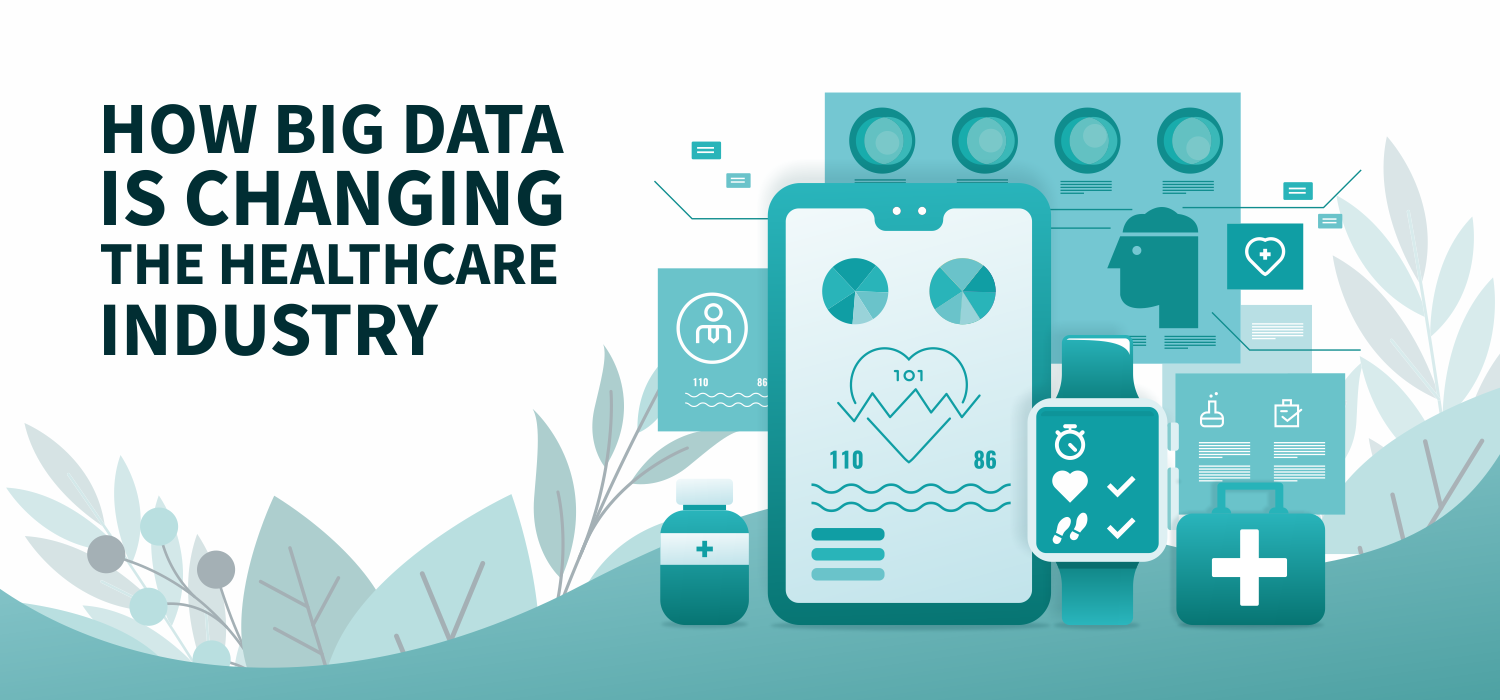The prevalence of big data has been a boon for the medical industry and it has helped it grow faster than any other sector including digital media, financial services or manufacturing companies' activities. A report from the International Data Corporation (IDC) reveals that healthcare data will experience a compound annual growth rate (CAGR) of 36% through 2025, the highest of any other industry.
This trend is mainly due to the increasing availability of real-time data, advancements in big data analytics tools and the adoption of new technologies like AI. Additionally, a rapidly aging US population is also expected to have an impact on the growing use of these technologies and big data’s contribution to healthcare. We’ve already seen how big data increases the ability of healthcare providers to predict epidemics and cure disease. In this sense it is expanding the reach of preventable healthcare, encouraging the growth of early preventive care, and promoting quality and longevity of life.
Health Tracking
In this regard, one of the biggest areas big data has made an impact is inpatient health tracking. The industry’s slow transition from legacy systems has created a data gap that has not always been able to avoid situations that could have been easily prevented otherwise. With the adoption of advanced IT systems and partnerships with leading technology providers, like the Mayo Clinic’s collaboration with IBM and its Watson Health Computer, and through the use of wearable and IoT devices, it’s now far easier for the healthcare sector to track patient vitals and stats.
These include anything from electronic medical tattoos to stick-on sensors that can track sleep, blood pressure, glucose levels, and heart rate, to pulse Oximeters and much more. This data is measured objectively, analyzed for any developing conditions and then seamlessly transmitted via Bluetooth to patients’ clinicians. The data collected from tracking patients’ health status from an early point will prevent the development of diseases and other medical conditions by providing early, preventive care.
Cost Reduction
The reduction of costs has been another huge contribution and its helping hospitals save on over or under booking staff. Through predictive analytics, hospitals can save big on allocating staff and by predicting admission rates. In turn, this can help save waiting times for patients, as hospitals will be prepared with the adequate amount of staff and available beds. Predictive analytics will also have a major impact on reducing human error and fraud.
Big data can be leveraged to analyze patient data, greatly reducing the chances of prescribing the wrong medication and saving lives. Moreover, the healthcare industry has been found to be 200% more likely to fall victim to data theft, due to the sensitive information they store, with The Centers for Medicare and Medicaid Services able to prevent a staggering $201.7 million in fraud by using big data analytics.
Doctors as Data Scientists
Doctors and health practitioners are now becoming data scientists and it’s only a matter of time until they are just as good with data-crunching as they are with medicine. As such, big data is set to have a major impact as Innovation Enterprise reveals how an aging global population is already putting serious strains on delivering efficient patient care.
As more Americans live longer, demand for medical practitioners and facilities around the country will continue to grow. As a result, Maryville University notes how healthcare in the U.S. is projected to grow by 18% from 2016 to 2026. Meeting the demand for more doctors and nurses, therefore, will not be an easy task, considering how training will take longer in the future given the necessity of turning them into data gurus.
What’s Next?
What will be the most effective solution? Current healthcare issues could be solved by increasing automation and leveraging technologies like predictive analytics, AI, robots and disruptive technologies like blockchain. A BIS Research Report noted how the secure and immutable nature of blockchain technology can save the healthcare field around $100-150 billion per year by 2025 in data-breach related costs, amongst others. Furthermore, with the amount of data available, AI and robotics can help augment doctors and nurses, who are far too often overworked that they struggle to provide care for every walk-in patient. Trends in healthcare, for example, AI can monitor patients’ vital signs and deal with more trivial issues while experts focus on the more critical cases. In fact, this approach is widely used among top healthcare companies now.
Read our article Top 5 Digital Transformation Trends for Healthcare Industry in 2019
These initiatives are possible because the sheer amount of health data currently being created is growing by 48% annually, with research from Stanford University School of Medicine indicating that 2,314 exabytes of healthcare data will be produced by 2020. As the healthcare industry evolves, big data will have a significant impact on moving from a pay-for-service to value-based care, which will be transforming pattern for the future of healthcare. The increasing amount of data is providing doctors and specialists with a more complete picture of their patients’ needs and encouraging a more holistic approach to medicine, which has the potential to solve problems in healthcare and increase efficiency and provide more positive patient outcomes.
Written by our guest contributor: Michelle Myers.





